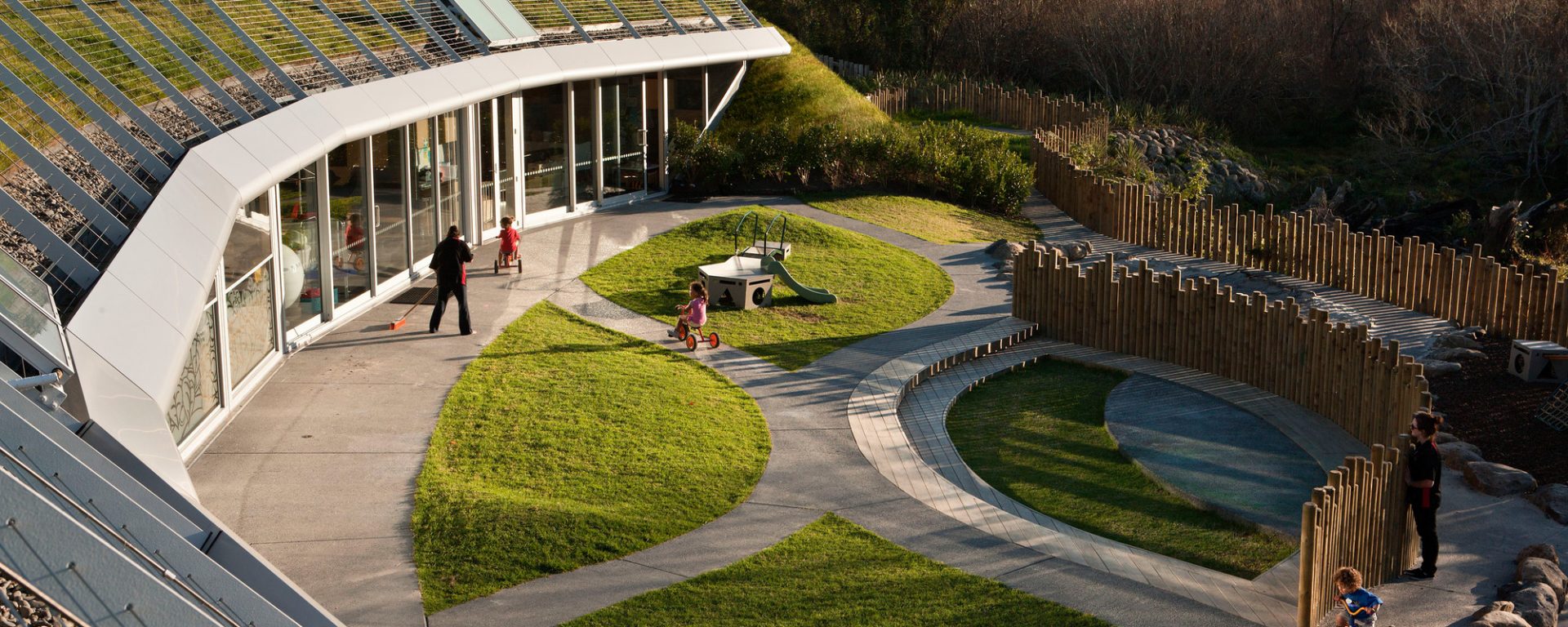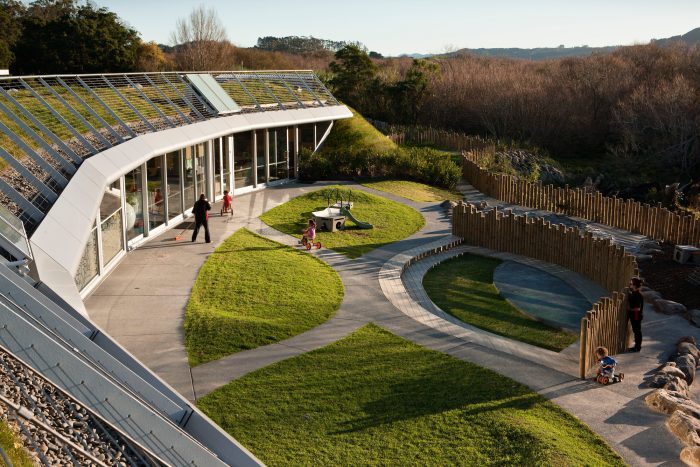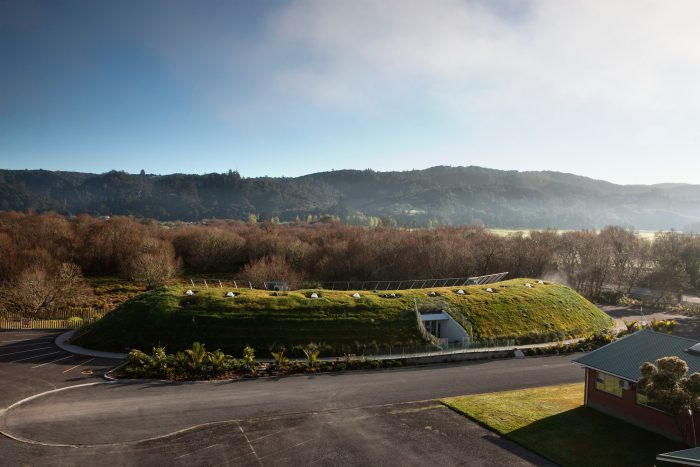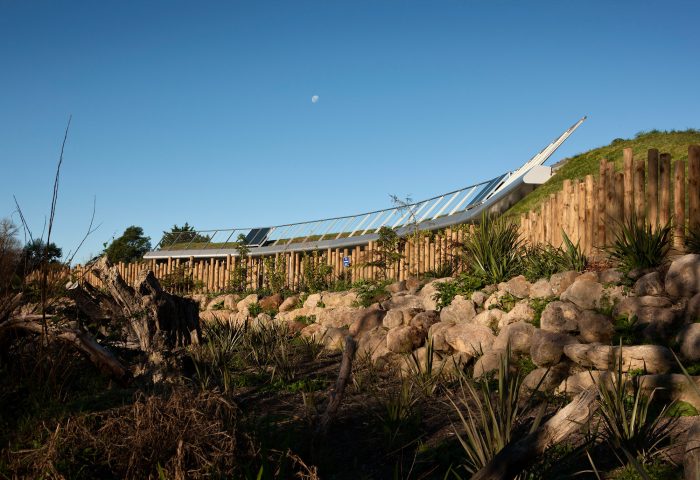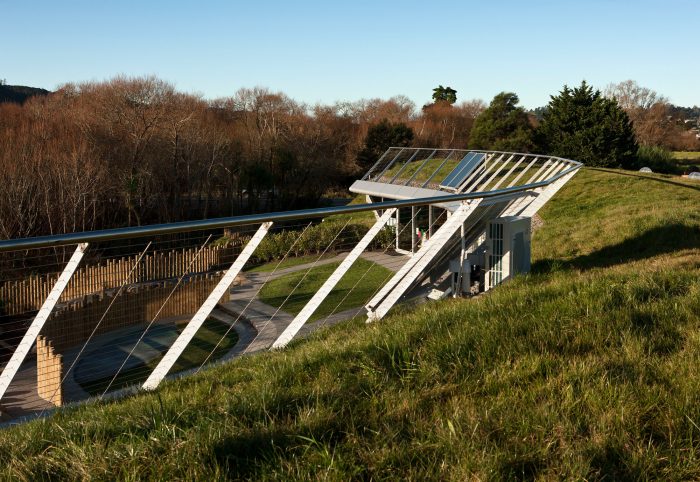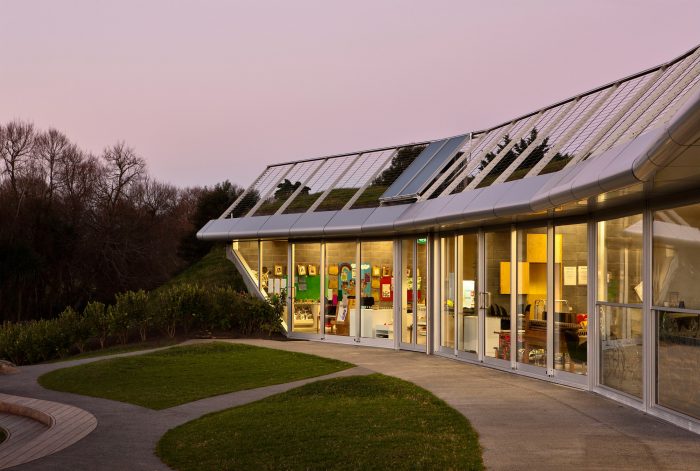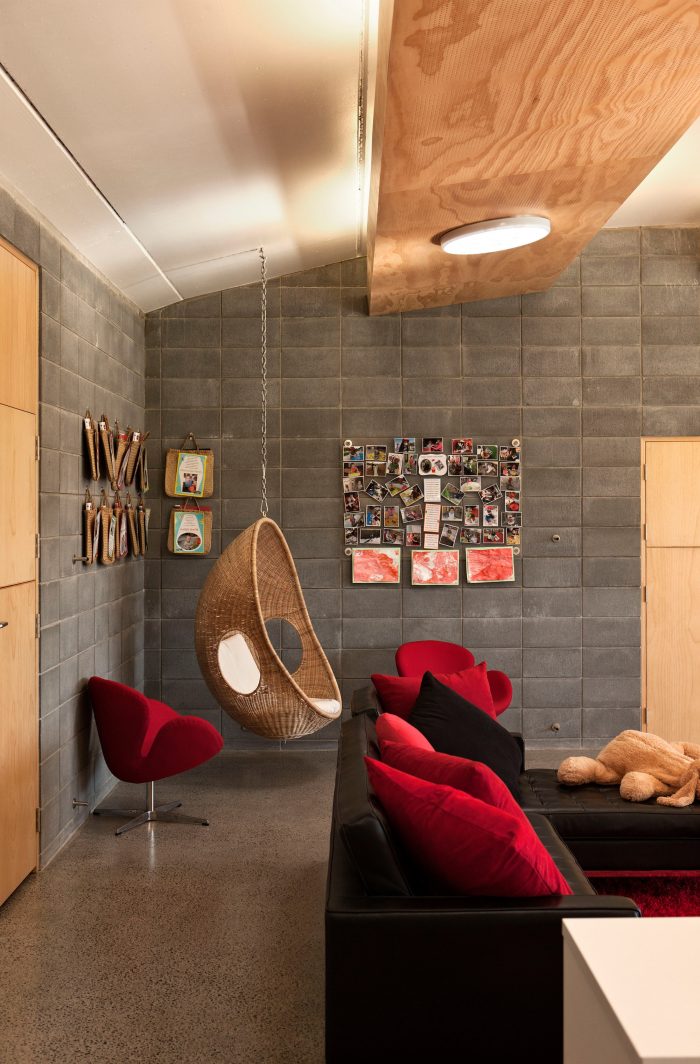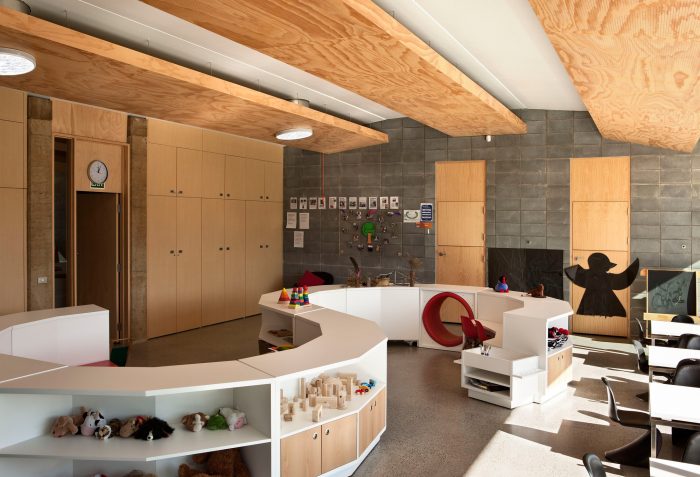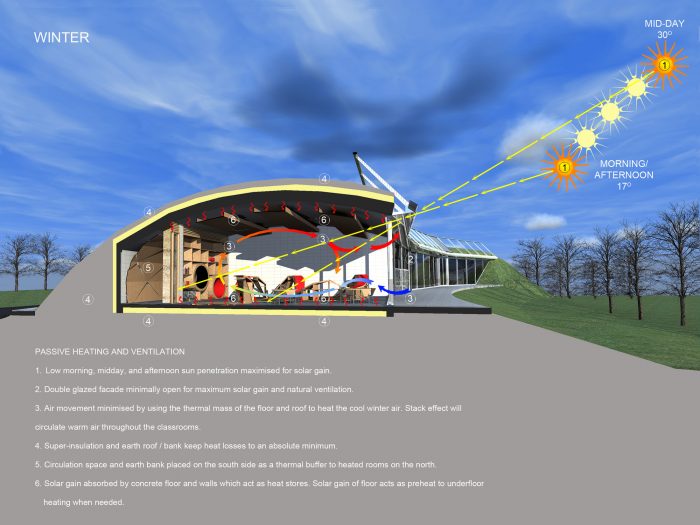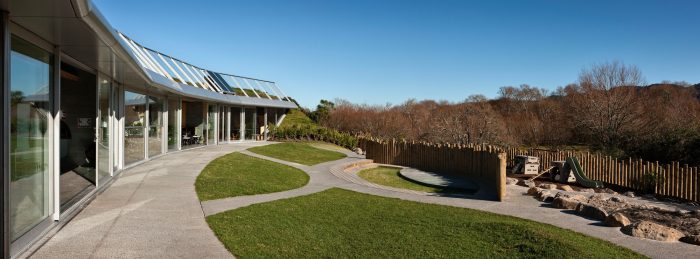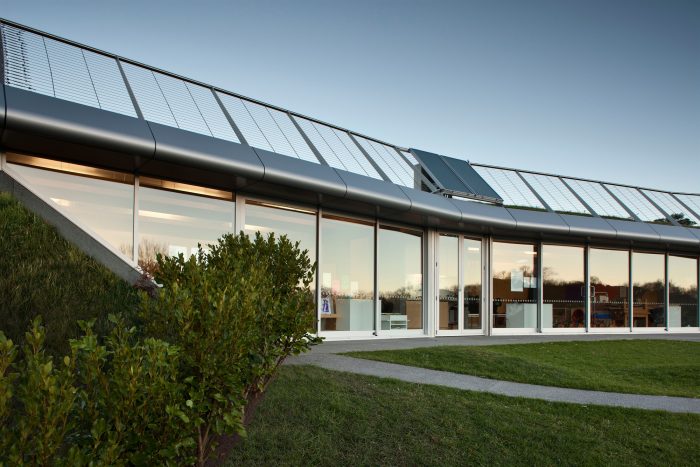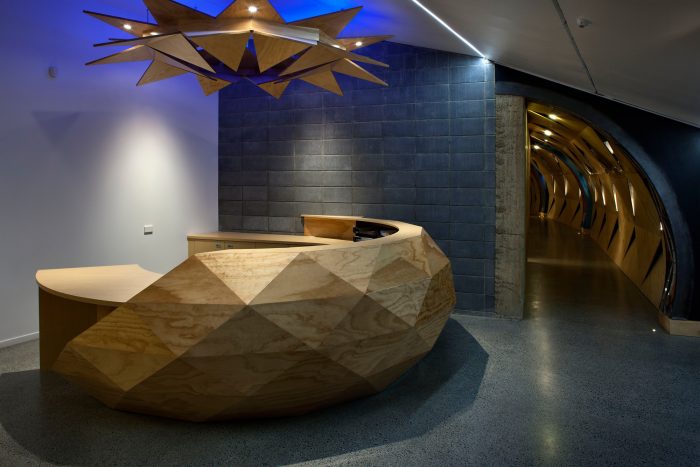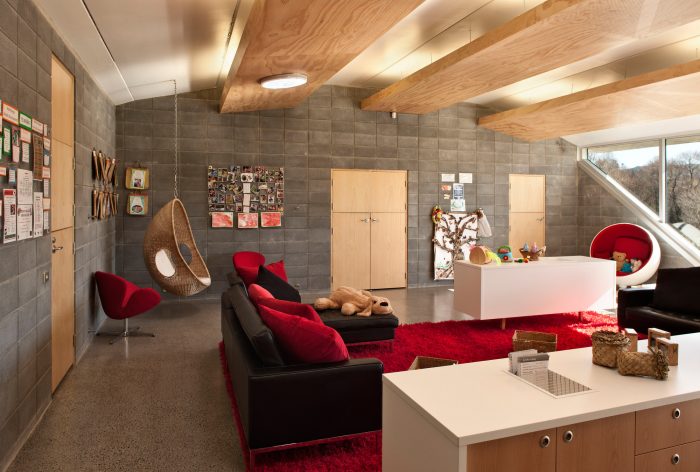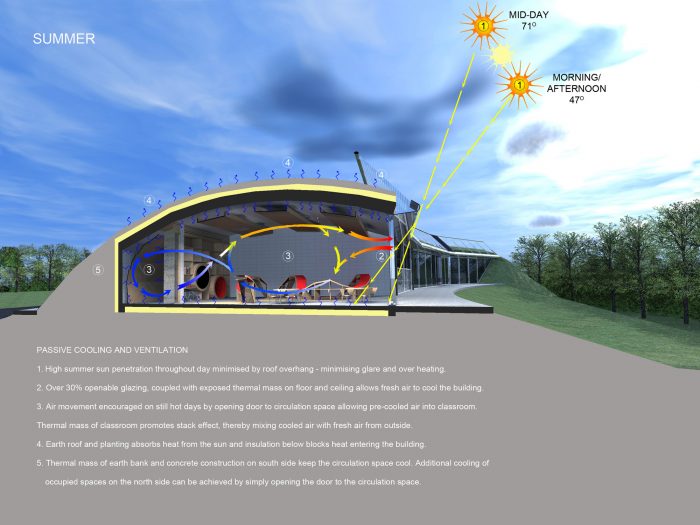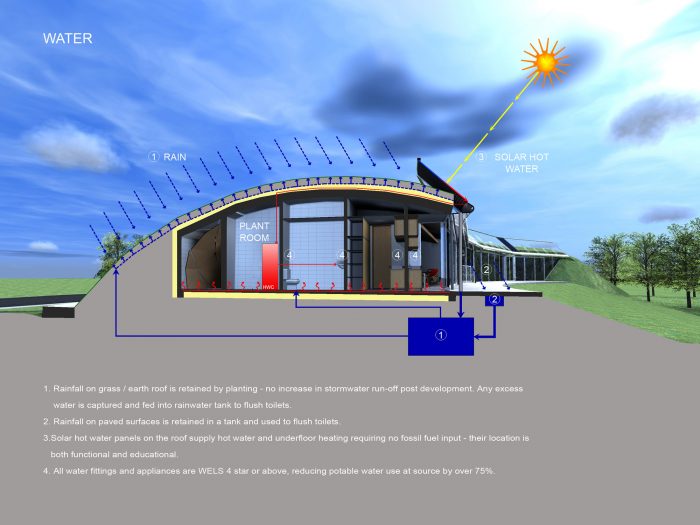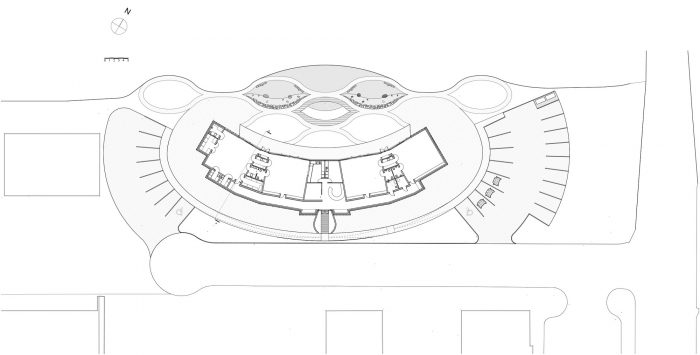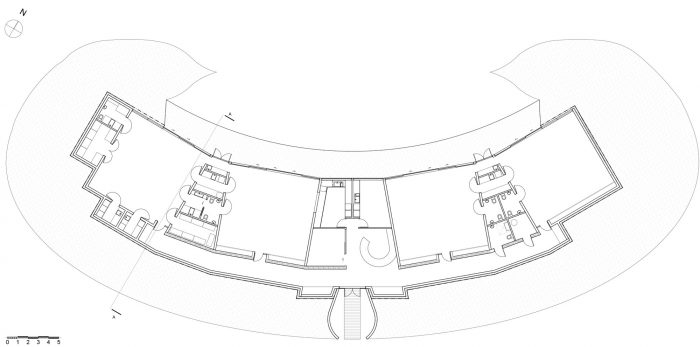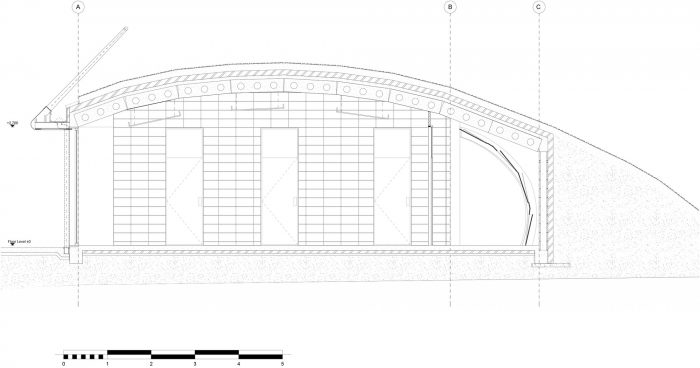该设计是为新西兰Kawakawa的一个毛利部落(Ngāti Hine)设计的早期儿童建筑。设计要求该建筑不仅要能容纳客户的孩子,而且要能在对环境影响最小的情况下向他们传授他们的文化和习俗。
This design is an early childhood building for a Maori tribe (Ngāti Hine) in Kawakawa, New Zealand. The brief called for a building which would not only accommodate the clients tamariki (children) but teach them about their culture and customs on a daily basis whilst having a minimal impact on the environment.
我们的设计理念是基于毛利人的传统,即所有的生命都诞生于Papatūānuku(大地之母)的子宫,在海的下面:毛利语中的陆地(whenua)一词也意味着胎盘。
Our concept for the building is based on the Maori tradition that all life is born from the womb of Papatūānuku (earth mother), under the sea: the word for land (whenua) in Maori also means placenta.
毛利人的建筑在历史上具有丰富的象征意义,因此设计的构思是将土地塑造成一个类似子宫的形状,建筑的形成就像一个婴儿在里面:建筑从土地上生长出来。
Maori architecture is historically rich in symbolism, and so the design is conceived by shaping the land into a womb-like form, with the building forming just like a baby within: the building literally grows out of the land.
建筑的唯一开口是沿着北面的立面,读作在土地上的一个切口。这个切口象征性地代表着剖腹产,所有的客户iwi(部落)都是通过这个切口来继承他们的血统:他们的祖先Hine ā Maru是有记录的第一位剖腹产的毛利妇女,并在大约600年前的手术中存活下来。孩子们正是从这个开口处象征性地进入 “光的世界”,在那里玩耍。
The only opening to the building is along the north facade, and reads as a cut in the earth. This cut symbolically represents the caesarian birth through which all of the clients iwi (tribe) take their lineage: their ancestor Hine ā Maru was the first recorded Maori woman to deliver a child by caesarian section and survive the procedure about 600 years ago. It is from this opening that the children symbolically enter the ‘world of light’, where they play.
建筑物位于沼泽地上,”子宫状 “的外形看起来像一座岛屿,这与所有陆地都诞生于海底的传统有关。一座桥形成了通往岛屿的通道,象征性地塑造了部落的瓦卡(独木舟)Ngātokimatawhaorua,代表了部落先民从哈瓦伊基到奥特亚罗亚(新西兰)的旅程。
The building is located on marshy ground, with the ‘womb-like form’ appearing as an island, relating back to the tradition that all land is born from under the sea. A bridge is formed to give access to the island, which is symbolically shaped into the tribal waka (canoe) Ngātokimatawhaorua, representing the journey of the tribes forefathers from Hawaiki to Aotearoa (NZ).
建筑物上堆积的泥土是指Ngāti Hine-pukerau(百山的Ngāti Hine–当地的地名,源自景观)。土层以下的内部代表了附近埋葬祖先的Waiomio洞穴,以及祖先Kawiti巧妙地利用地下掩体作为防御的Ruapekapeka pā(防御工事)。圆形的设计形式也从传统的pā中获得灵感。
The earth that mounds up over the building makes reference to Ngāti Hine-pukerau (Ngāti Hine of a hundred hills-a local name derived from the landscape). The interior, below the earth, represents the nearby Waiomio caves where the ancestors lay buried and the Ruapekapeka pā (fortification) where the ancestor Kawiti cleverly used underground shelters as defence from attack. The circular form of the design also draws inspiration from traditional pā.
同样重要的是将被动式环境设计特征融入建筑中,因此所有的 “象征性 “特征都具有许多环保目的:所有玻璃都朝向北方,以获得最大限度的太阳能,而超级隔热的土质屋顶使热量损失最小,南面放置的非加热循环空间进一步帮助了热量损失。为了进一步提高内部舒适度,裸露的混凝土结构和自然通风使建筑在夏季被动冷却,冬季由太阳能热水地板系统提供最小的供暖。所有空间都是自然采光,白天不需要额外的电力照明。所有的黑水都经过现场处理,清洁的富含营养的水用于灌溉绿色屋顶。该建筑已经提交了绿色之星评级,预计可以达到6星。
It was equally important to integrate passive environmental design features into the building, so all ‘symbolic’ features have many environmental purposes: all glazing is oriented to the north for maximum solar gain, whilst the super-insulated earth roof results in minimal heat loss, which is further assisted by the unheated circulation space placed to the south. For further internal comfort, exposed concrete construction and natural ventilation allows the building to be passively cooled in summer, with minimal heating back-up in winter provided by a solar hot water underfloor system. All spaces are naturally daylit and will need no additional electrical lighting during the daytime. All blackwater is treated on site and the clean nutrient rich water is used to irrigate the green roof. The building has been submitted for a Green Star rating and is anticipated could achieve 6 stars.
建筑师:Collingridge and Smith Architects
面积:572平方米
年份:2012年
摄影:Simon Devitt
制造商: Resene, Bitubel
负责建筑师:菲尔-史密斯
设计团队:菲尔-史密斯、格雷厄姆-科林格里奇、格雷森-万达、克洛伊-普拉特
客户:Ngati Hine Health Trust
机电顾问:Eco Design Consultants和WSP
规划主管:Simon Yates
灯光顾问:Mike Renwick,Lighthouse Remuera
承包商 : 霍华德-哈内特建筑公司
城市:Kawakawa
国家:新西兰
Architects: Collingridge and Smith Architects
Area: 572 m²
Year: 2012
Photographs: Simon Devitt
Manufacturers: Resene, Bitubel
Architect In Charge:Phil Smith
Design Team:Phil Smith, Graham Collingridge, Grayson Wanda, Chloe Pratt
Client:Ngati Hine Health Trust
Mechanical & Electrical Consultant:Eco Design Consultants and WSP
Planning Supervisor:Simon Yates
Lightning Consultant:Mike Renwick, Lighthouse Remuera
Contractor|:Howard Harnett Builders
City:Kawakawa
Country:New Zealand

